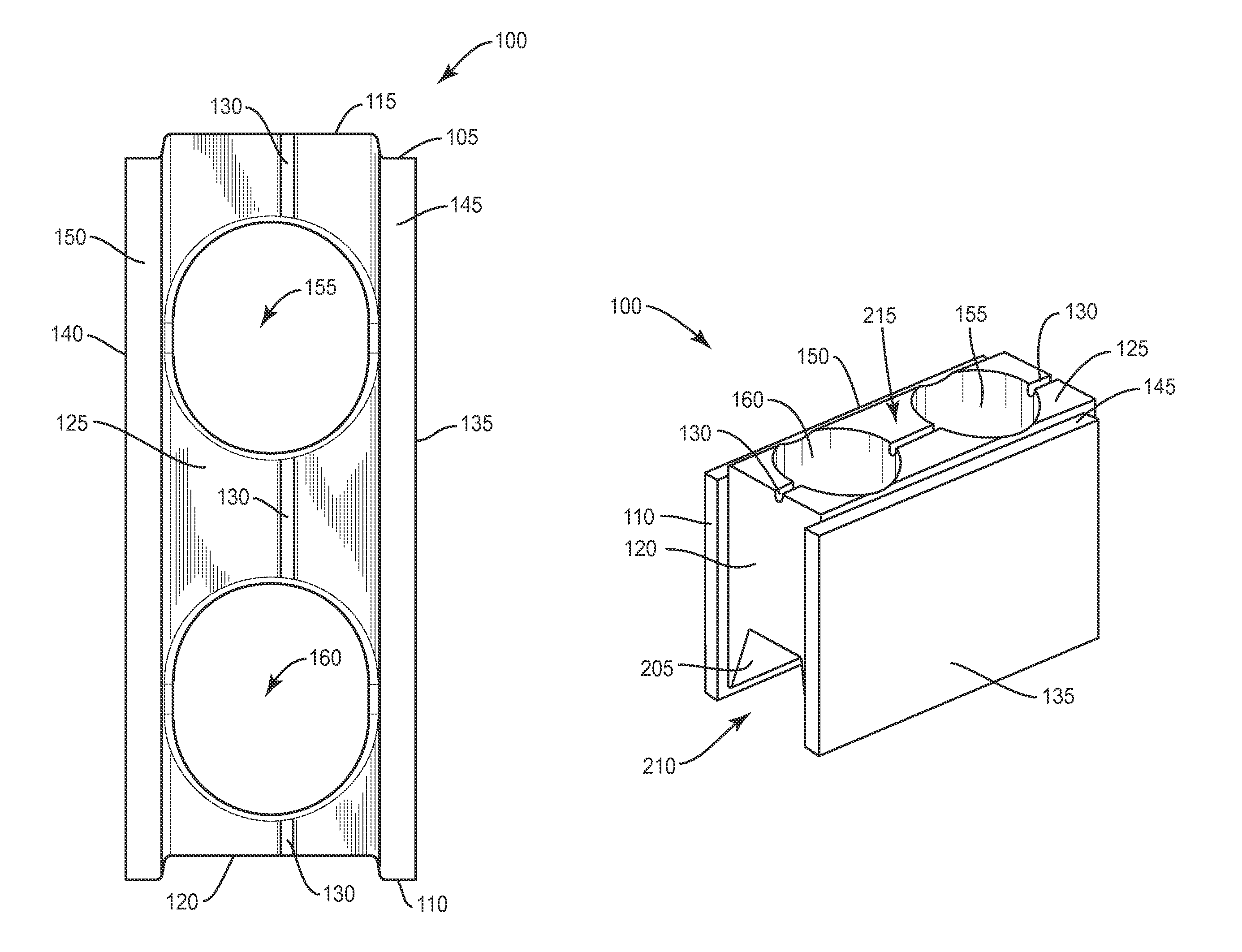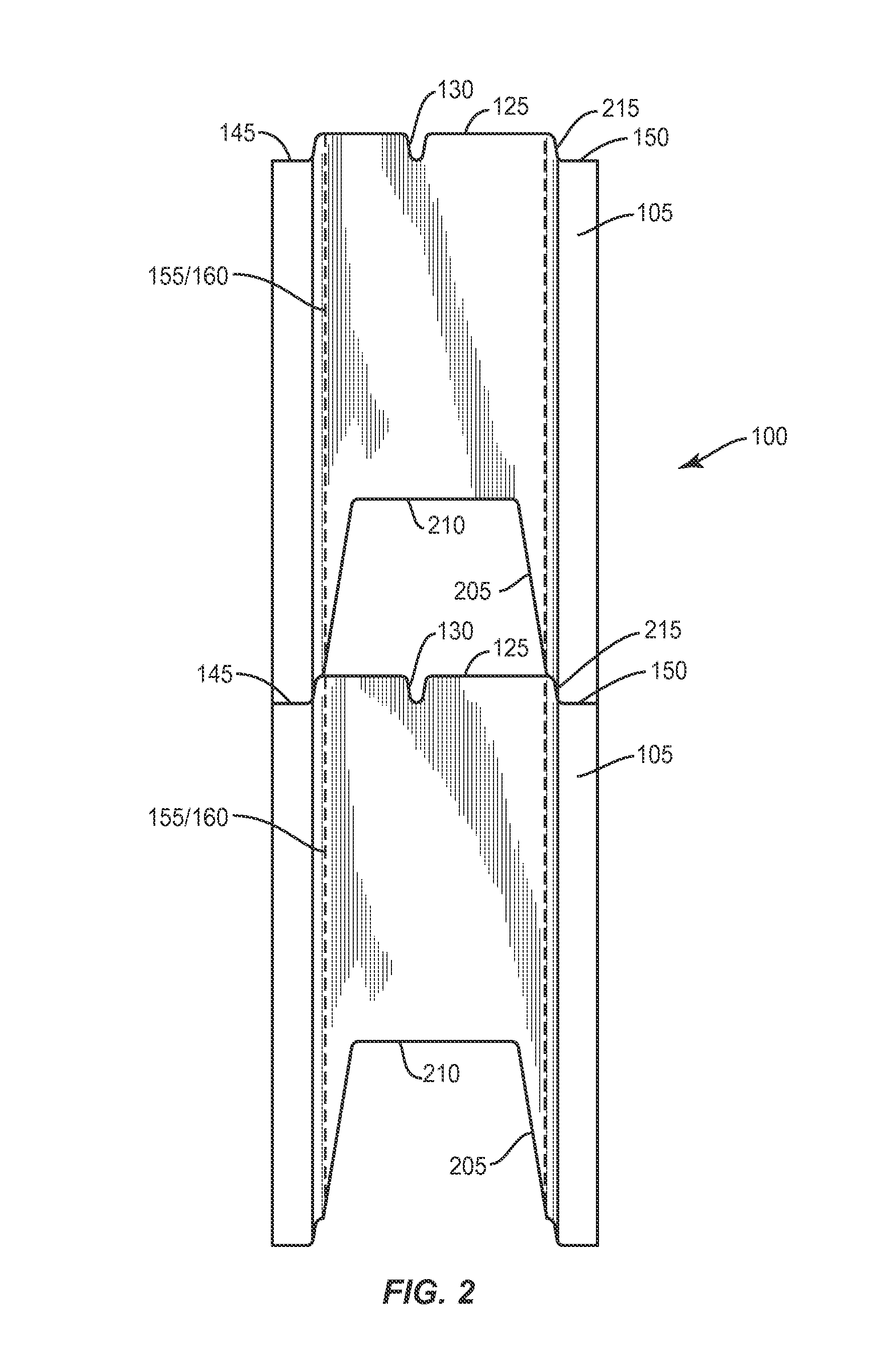Light-in-weight concrete blocks and method
a technology of concrete blocks and concrete blocks, applied in the field of cement blocks, can solve the problems of heavy and difficult work, difficult installation, and difficulty in installing conventional blocks, and achieve the effect of facilitating construction and lightening the weigh
- Summary
- Abstract
- Description
- Claims
- Application Information
AI Technical Summary
Benefits of technology
Problems solved by technology
Method used
Image
Examples
Embodiment Construction
[0030]The top wall and bottom wall of a conventional concrete masonry unit, also called concrete brick, concrete block, cement block, besser block, breeze block and cinder block, are flat and generally have a width of seven and five-eighths inches (7⅝″) and a length of fifteen and five-eighths inches (15⅝″). Conventional flat top and bottom walls of confronting, vertically stacked blocks are spaced apart from one another by a layer of concrete. The blocks are not keyed to one another due to their respective flat surfaces and their proper alignment is thus the responsibility of the block layer.
[0031]Each novel block 100 has six (6) walls (top and bottom walls, first and second end walls, and two sidewalls), like conventional blocks, but four (4) of them are sculpted.
[0032]More particularly, referring to FIGS. 1 through 4, the first and second end walls, denoted 105 and 110, respectively, are sculpted to facilitate the longitudinal alignment of blocks 100, i.e., the sculpting of the f...
PUM
 Login to View More
Login to View More Abstract
Description
Claims
Application Information
 Login to View More
Login to View More - R&D
- Intellectual Property
- Life Sciences
- Materials
- Tech Scout
- Unparalleled Data Quality
- Higher Quality Content
- 60% Fewer Hallucinations
Browse by: Latest US Patents, China's latest patents, Technical Efficacy Thesaurus, Application Domain, Technology Topic, Popular Technical Reports.
© 2025 PatSnap. All rights reserved.Legal|Privacy policy|Modern Slavery Act Transparency Statement|Sitemap|About US| Contact US: help@patsnap.com



